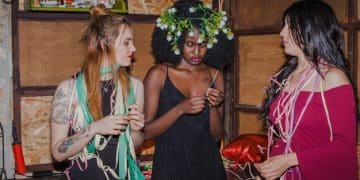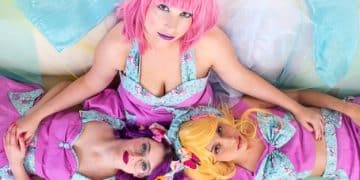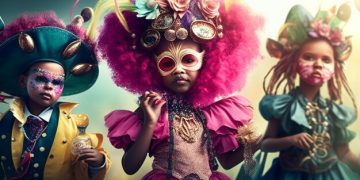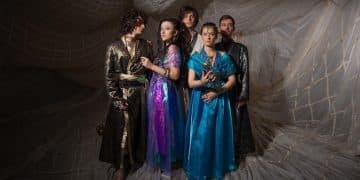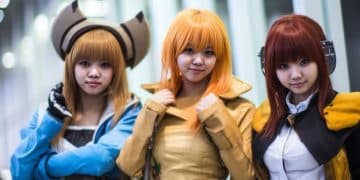Cosplay: Expressing Yourself Through Geek Lifestyle
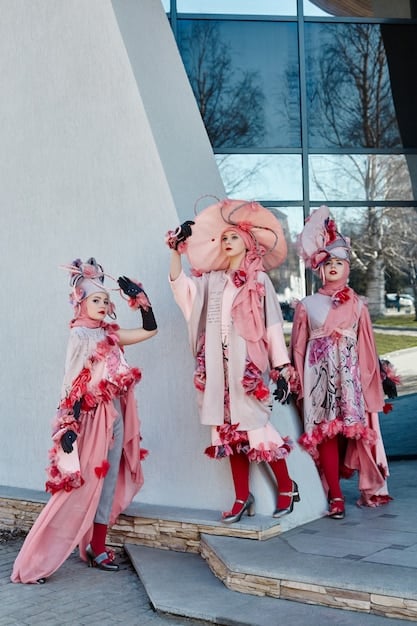
Cosplay, short for “costume play,” is a performance art and a hobby where participants, called cosplayers, wear costumes and fashion accessories to represent a specific character, often from anime, manga, comic books, video games, or films, allowing them to express their creativity and passion within the geek lifestyle.
Dive into the vibrant world of cosplay, where imagination takes physical form and fandoms come to life. This exciting facet of geek lifestyle offers a canvas for self-expression and a chance to embody beloved characters.
What is Cosplay?
Cosplay, as mentioned, is a portmanteau of “costume play.” It’s more than just dressing up; it’s about embodying a character. But what truly defines this unique form of expression and why is it so deeply intertwined with geek culture?
Let’s unravel the history and elements of cosplay that make it a beloved activity around the globe.
The Origins and Evolution of Cosplay
While the exact origins are debated, many trace cosplay’s roots to early science fiction conventions in the United States and Japan. The practice evolved beyond simple costumes to include detailed craftsmanship and performance aspects.
- Early Science Fiction Conventions: Fans began wearing costumes to express their enthusiasm for their favorite characters and stories.
- Japanese Influence: The otaku culture in Japan embraced cosplay, adding a new level of artistry and dedication.
- Global Phenomenon: Today, cosplay is celebrated worldwide in conventions, competitions, and online communities.
From humble beginnings to a global phenomenon, cosplay has transformed into a significant part of geek culture, celebrated for its creativity, craftsmanship, and community spirit.
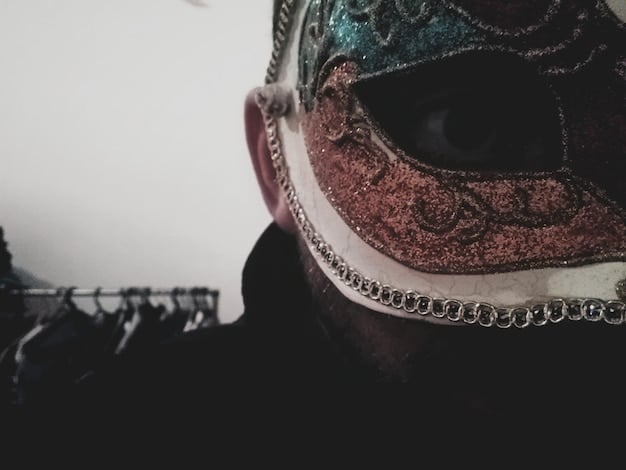
The Art of Costume Creation
Creating a cosplay is much more than just throwing on a costume. It is an art form of its own, involving a variety of skills and detailed work. From sketching designs to meticulously crafting each piece, the process is often a labor of love.
Now, let’s explore the journey of creating a cosplay and some of the techniques used by skilled cosplayers.
When you are creating these costumes it is important to have a well thought out plan. From the design to the materials you need to the process of making the costume.
Materials Used in Crafting Cosplay Costumes
Cosplayers use a wide range of materials, each offering unique properties. The choice of material often depends on the character and the desired effect.
- Fabric: Versatile and can be used for various outfits, from simple to elaborate designs.
- Foam: Lightweight and easy to shape, making it ideal for armor and props.
- Worbla: A thermoplastic that can be molded and remolded, perfect for intricate details.
- 3D Printing: Allows for the creation of complex shapes and structures with precision.
The Social Aspect of Cosplay
Cosplay is not only a solo artistic endeavor; it’s also a social activity that brings people together. Conventions, meetups, and online communities offer cosplayers opportunities to connect, share their work, and support each other.
Let’s examine how cosplay fosters a sense of belonging and community among its practitioners.
Cosplay can unite people with common interests and goals. The shared passion is what makes people form strong bonds within this culture.
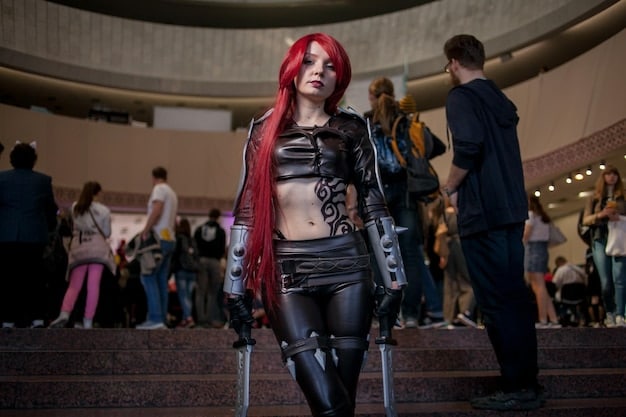
Conventions and Cosplay Events
Conventions are central to the cosplay community, providing a venue for cosplayers to showcase their creations, compete in contests, and meet fellow enthusiasts. These events are vibrant celebrations of fandom.
- Anime Expo: One of the largest anime conventions in North America, featuring a diverse range of cosplay.
- Comic-Con International: A major platform for comic book and pop culture cosplay.
- Dragon Con: Known for its elaborate costumes and immersive fan experiences.
Cosplay conventions create a vibrant, inclusive environment where fans can share their love for characters and stories, further solidifying the bonds withing the community.
Cosplay as Performance Art
Cosplay extends beyond costume creation to include performance. Many cosplayers adopt the mannerisms, poses, and catchphrases of their chosen characters, adding a layer of artistry to their presentation. Some even participate in staged actings.
Let’s explore how cosplayers bring their characters to life through performance.
These displays can take place at conventions, in local shows, or even on personal social media.
Cosplay Photography
Cosplay photography is a crucial part of performance art, immortalizing the costumes and expressions of cosplayers. Professional and amateur photographers collaborate with cosplayers to capture stunning visuals.
- Location Shoots: Cosplayers and photographers choose locations that complement the character’s world.
- Studio Shoots: Controlled environments that allow for detailed lighting and composition.
- Editing and Post-Processing: Enhancing the photos to create a visually striking final product.
Cosplay photography combines the artistry of costume creation with the skills of photography. These images allow cosplayers to share their artistic expression with a wider audience, preserving their hard work.
Challenges and Criticisms in Cosplay
Like any art form, cosplay faces challenges and criticisms. Issues of cultural appropriation, body shaming, and harassment exist within the community, and steps are being taken to promote inclusivity and respect.
Let’s discuss some of these issues and efforts to address them, in order to keep the fun alive.
These things do not define cosplay and people should remember that.
Cultural Appropriation in Cosplay
Cosplaying characters from different cultures can lead to issues of cultural appropriation. It’s crucial for cosplayers to approach these costumes with sensitivity and respect, researching and understanding the cultural significance of the character they portray.
- Lack of Understanding: Cosplayers may unintentionally misrepresent or trivialize cultural elements.
- Respectful Representation: Learning about the culture and portraying the character accurately and respectfully is essential.
- Seeking Guidance: Consulting with members of the culture to ensure authenticity and avoid offense.
Addressing cultural appropriation in cosplay requires education, awareness, and a commitment to respectful representation. By understanding the cultural significance of characters, cosplayers can foster a more inclusive and appreciative community.
The Future of Cosplay
Cosplay continues to evolve. Innovations like advancements in 3D printing, and augmented reality bring new possibilities to costume creation and performance. The community is also growing more inclusive and diverse, celebrating cosplayers of all backgrounds and identities.
Let’s look ahead at the potential future of this expressive art form.
This could expand access to resources as well for people that live in less developed countries.
The Impact of Technology on Cosplay
Technology is transforming cosplay, from costume design to performance. 3D printing, virtual reality, and digital fabrication tools are empowering cosplayers to create more elaborate and immersive experiences.
- 3D Printing: Creating complex props and armor with precision.
- Virtual Reality: Immersive cosplay experiences that blend the physical and digital worlds.
Technology is enhancing craftsmanship and pushing the boundaries of what is possible in cosplay. These advancements promise to create even more spectacular and immersive experiences for cosplayers and audiences alike.
| Key Point | Brief Description |
|---|---|
| 🎨 Art of Creation | Cosplay includes detailed craftwork like design, materials, and construction techniques. |
| 🎭 Performance Art | Cosplayers embody characters by adopting their mannerisms and poses. |
| 🤝 Social Aspect | Community through conventions, meetups, and online groups. |
| 🛠️ Tech Impact | 3D printing and virtual reality elevate costume creation and experiences. |
FAQ
▼
The term cosplay is a combination of “costume” and “play,” where individuals dress up and embody characters from various media, such as anime, comic books, games, and movies.
▼
Cosplay’s origins are often traced to early science fiction conventions in the United States and Japan, evolving from simple costumes to elaborate performances over time.
▼
Cosplayers use a wide variety of materials, including fabrics, foam, Worbla (thermoplastic), and 3D-printed parts, depending on the desired look, detail, and functionality of the costume.
▼
Cosplay gathers enthusiasts at conventions, meetups, and online venues, allowing them to exhibit designs, compete in competitions, and make new friends, all while celebrating mutual hobbies.
▼
Cultural appropriation, harassment, and body shaming are some serious problems associated with cosplay. However, active efforts are continually needed to create a safe and inclusive environment for everyone.
Conclusion
Cosplay embodies more than just costume creation; it brings fandoms to life, fosters community, and promotes self-expression. As technology advances and inclusivity grows, the world of cosplay promises even greater creativity and diversity, making it a timeless and dynamic part of geek lifestyle.
